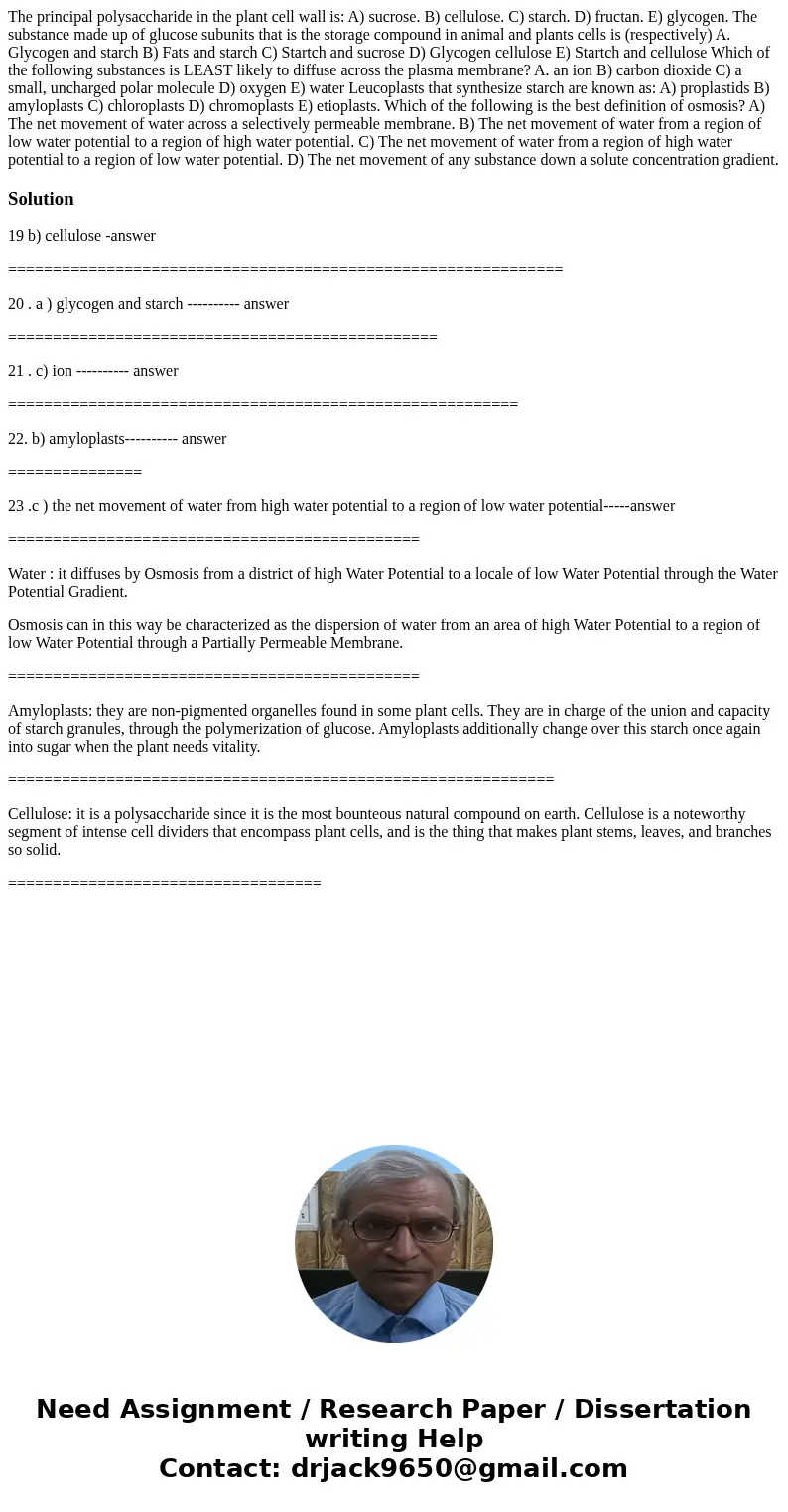The principal polysaccharide in the plant cell wall is A suc
Solution
19 b) cellulose -answer
==============================================================
20 . a ) glycogen and starch ---------- answer
================================================
21 . c) ion ---------- answer
=========================================================
22. b) amyloplasts---------- answer
===============
23 .c ) the net movement of water from high water potential to a region of low water potential-----answer
==============================================
Water : it diffuses by Osmosis from a district of high Water Potential to a locale of low Water Potential through the Water Potential Gradient.
Osmosis can in this way be characterized as the dispersion of water from an area of high Water Potential to a region of low Water Potential through a Partially Permeable Membrane.
==============================================
Amyloplasts: they are non-pigmented organelles found in some plant cells. They are in charge of the union and capacity of starch granules, through the polymerization of glucose. Amyloplasts additionally change over this starch once again into sugar when the plant needs vitality.
=============================================================
Cellulose: it is a polysaccharide since it is the most bounteous natural compound on earth. Cellulose is a noteworthy segment of intense cell dividers that encompass plant cells, and is the thing that makes plant stems, leaves, and branches so solid.
===================================

 Homework Sourse
Homework Sourse